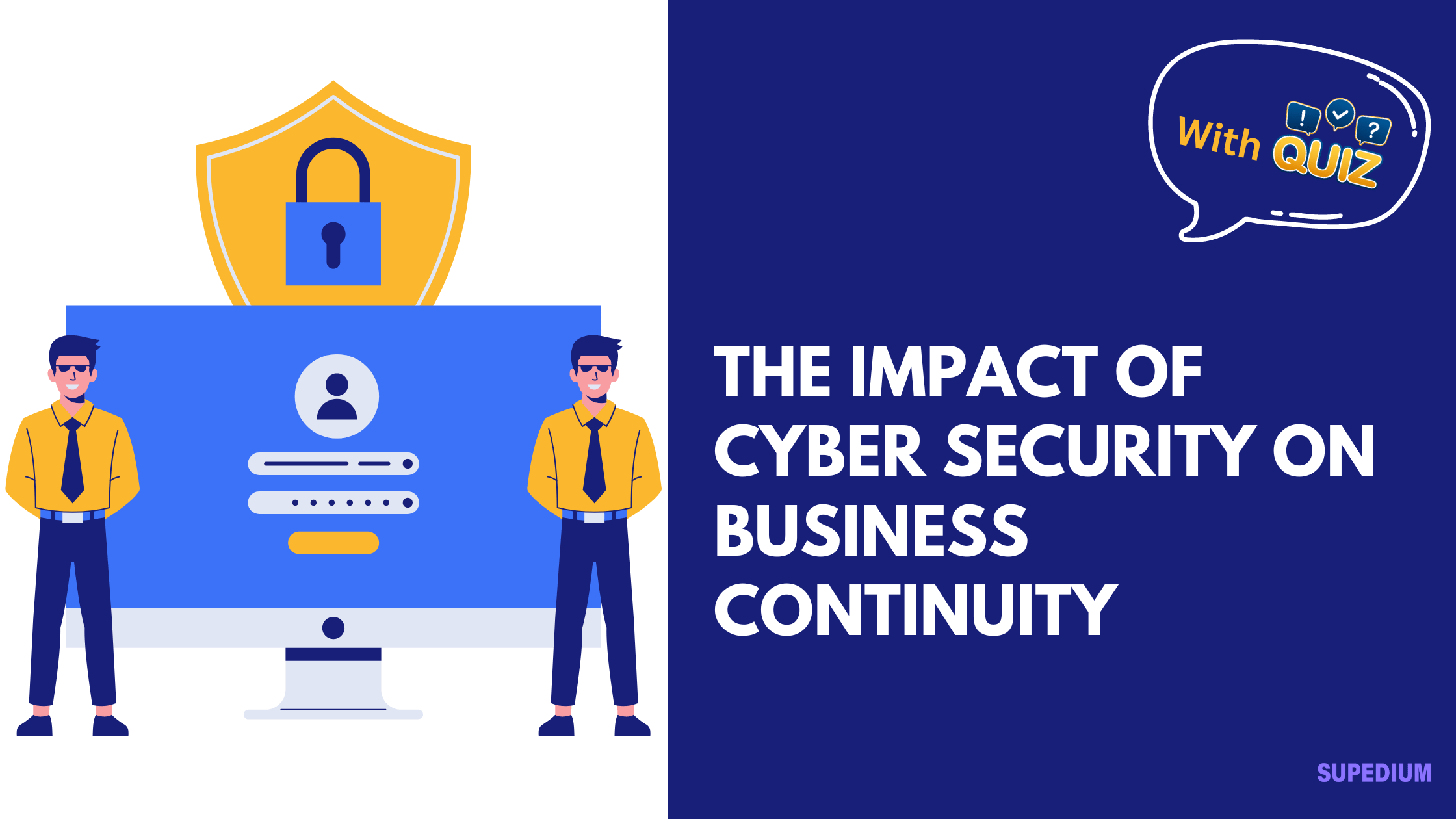Table of Contents
- 1 I. Introduction
- 2 II. Understanding Cyber Security
- 3 III. Business Continuity Planning (BCP)
- 4 IV. The Intersection of Cyber Security and Business Continuity
- 5 V. Key Cyber Security Measures for Ensuring Business Continuity
- 6 VI. Case Studies
- 7 VII. Challenges and Considerations
- 8 VIII. Future Trends
- 9 IX. Conclusion
- 10 Quiz Time
![]()
I. Introduction
In today’s digital landscape, businesses rely heavily on technology to operate efficiently. As cyber threats become more sophisticated and prevalent, the relationship between cyber security and business continuity has never been more critical. Cyber security involves protecting systems, networks, and data from cyber threats, while business continuity refers to the processes and plans that ensure the continued operation of an organization during and after a disruptive event. This article explores the profound impact of cyber security on business continuity and outlines strategies to integrate both effectively.
II. Understanding Cyber Security
A. Key Concepts and Terminology
Cyber security encompasses a range of practices designed to protect information systems from attacks. Key concepts include threats, which are potential events that could cause harm, and vulnerabilities, which are weaknesses that can be exploited. Common types of cyber attacks include malware, phishing, ransomware, and denial-of-service attacks.
B. Current Cyber Security Landscape
The cyber security landscape is rapidly evolving. Recent statistics indicate that a business experiences a cyber attack every 39 seconds, and the average cost of a data breach is approximately $3.86 million. Notable breaches, such as those involving Equifax and Target, highlight the severe consequences of inadequate cyber security measures.
III. Business Continuity Planning (BCP)
A. Definition and Importance of BCP
Business continuity planning (BCP) is the process of creating systems of prevention and recovery to deal with potential threats to a company. Effective BCP is essential for minimizing downtime and ensuring operational resilience in the face of disruptions.
B. Key Components of BCP
A robust BCP includes several components:
- Risk Assessment and Management: Identifying potential risks and their impacts.
- Business Impact Analysis: Understanding which business functions are critical and how they would be affected by disruptions.
- Recovery Strategies: Developing specific actions to restore business operations after an incident.
IV. The Intersection of Cyber Security and Business Continuity
A. How Cyber Threats Affect Business Continuity
Cyber threats pose significant risks to business continuity. A successful attack can disrupt operations, leading to financial losses, operational downtime, and damage to an organization’s reputation. The interconnectedness of modern systems means that a breach in one area can have ripple effects throughout the entire organization.
B. The Role of Cyber Security in BCP
Integrating cyber security into BCP frameworks is essential. Organizations must develop cyber resilience, enabling them to anticipate, prepare for, respond to, and recover from cyber incidents effectively. This includes regular updates to security protocols and training staff on best practices.
V. Key Cyber Security Measures for Ensuring Business Continuity
A. Risk Assessment and Management
An effective BCP begins with thorough risk assessment. Organizations should identify their critical assets and potential threats, followed by continuous monitoring and evaluation of their security posture.
B. Incident Response Planning
Having a well-defined incident response plan is crucial. This plan should outline the steps to take during a cyber incident, including:
- Developing Response Protocols: Clearly defined roles and responsibilities.
- Communication Strategies: Keeping stakeholders informed during an incident to maintain trust and transparency.
C. Data Backup and Recovery Solutions
Regular data backups are essential for business continuity. Organizations should ensure that they have reliable backup systems in place and conduct regular tests of their recovery plans to validate their effectiveness.
VI. Case Studies
A. Successful Integration of Cyber Security in BCP
One notable example is a financial services company that faced a significant ransomware attack. By having a comprehensive BCP that included cyber security measures, the company was able to restore operations within 48 hours, minimizing financial losses and maintaining customer trust.
B. Consequences of Neglecting Cyber Security in BCP
Conversely, the 2017 Equifax breach serves as a stark reminder of the consequences of neglecting cyber security. The breach compromised sensitive data of over 147 million individuals, resulting in a loss of consumer trust, regulatory fines, and substantial financial damages.
VII. Challenges and Considerations
A. Evolving Cyber Threat Landscape
The cyber threat landscape is constantly evolving, requiring businesses to stay ahead of emerging threats. Organizations must adapt their strategies regularly to address new vulnerabilities.
B. Balancing Cost and Security
Many businesses struggle to balance the cost of implementing robust cyber security measures with their overall budget. However, the potential costs associated with a data breach far outweigh the investment in preventive measures.
C. Employee Training and Awareness
A security-aware culture is crucial for effective cyber security. Ongoing education and training programs can equip employees with the knowledge to recognize threats and respond appropriately, significantly reducing the risk of human error.
VIII. Future Trends
A. The Rise of AI and Automation in Cyber Security
Artificial intelligence (AI) and automation are increasingly being utilized to enhance cyber security measures. These technologies can help detect anomalies and respond to threats in real-time, improving overall security posture.
B. Increased Regulation and Compliance Requirements
As cyber threats grow, so too do regulatory frameworks. Organizations must stay informed about compliance requirements to avoid penalties and ensure their BCP includes cyber security considerations.
C. The Importance of Cyber Insurance
Cyber insurance is becoming a vital component of risk management for businesses. It can provide financial protection against losses from cyber incidents and assist in recovery efforts.
IX. Conclusion
In conclusion, the interplay between cyber security and business continuity is critical for modern organizations. As cyber threats continue to evolve, businesses must prioritize integrating cyber security measures into their BCP frameworks. By doing so, they can safeguard their operations, protect their reputations, and ensure resilience in the face of potential disruptions. The call to action is clear: organizations must invest in both cyber security and business continuity to thrive in today’s digital age.






Be the first to comment